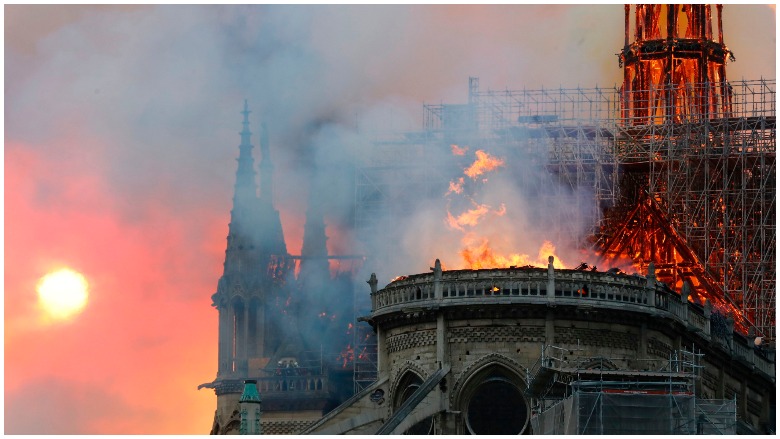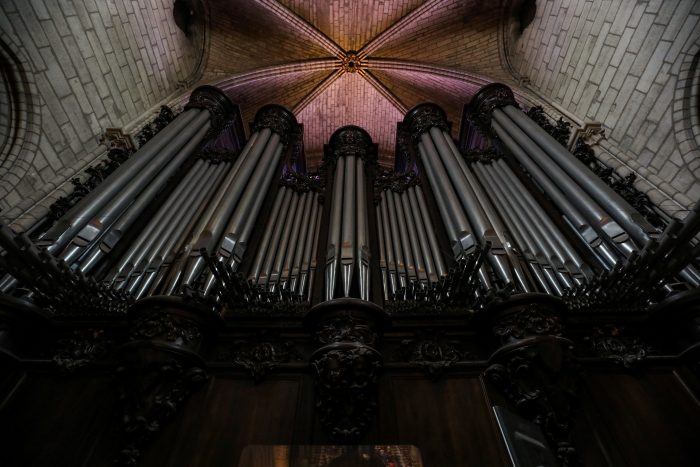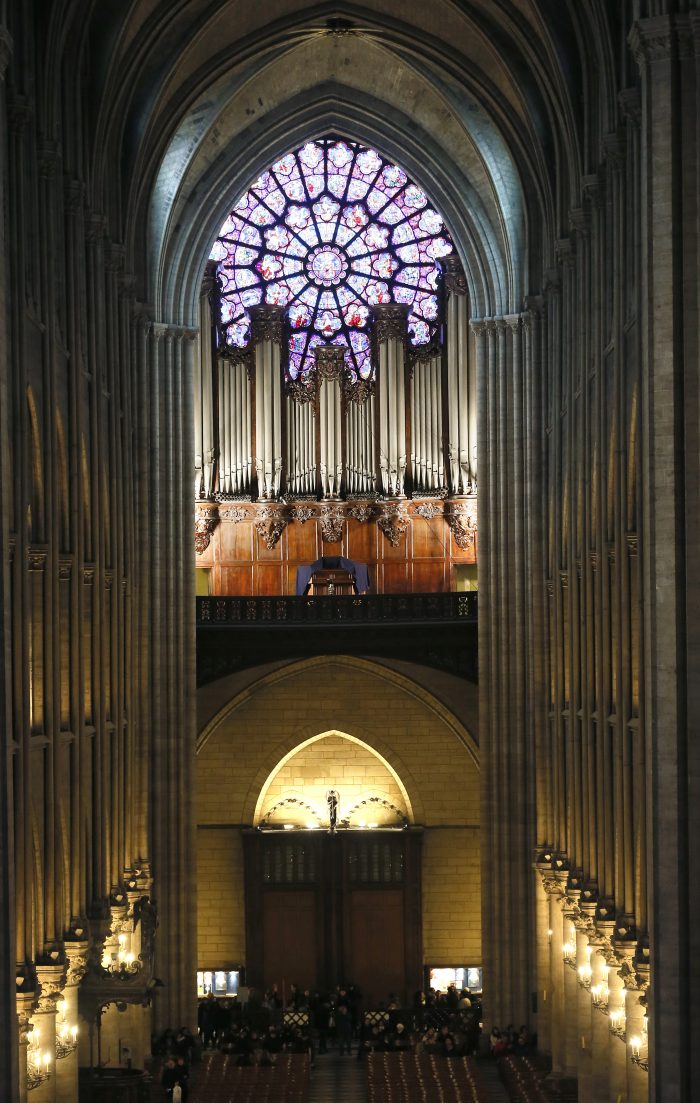
Catholics around the world watched in disbelief as the iconic Notre Dame Cathedral burns in Paris. The fire sparked April 15, 2019, around 6:30 p.m. local time and raged for hours.
One of the items inside the cathedral that onlookers worried about was the historic organ. Officials confirmed to the Associated Press that the instrument appears to have survived the devastation. But the level of damage, due to the intense heat inside the cathedral, needed to be evaluated. Organ builder Bertrand Cattiaux told the New York Times that damaged portions of the organ appeared restorable and that none of the pipes had collapsed.
The exact cause of the fire remained unclear hours after the fire had been doused, but early reports suggested that renovation work may have been a factor. The fire began in the cathedral’s attic and appears to have been an accident; officials have said there is no evidence of arson. The nearly 300-foot tall spire at the top of the cathedral collapsed and a majority of the roof caved in. Officials say the towers are safe and responders managed to recover priceless relics such as the crown of thorns and religious artwork.
Hundreds of firefighters struggled to get the flames under control, as smoke billowed high into the air over the city. Officials explained that they could not use aircraft to dump water over the top of the building because doing so could have caused the entire structure to collapse. One firefighter and two police officers sustained injuries, the fire department shared on social media.

GettyThis photograph taken on June 26, 2018, shows the organ at Notre Dame de Paris Cathedral in Paris.
The current organ at Notre Dame dates back to the 18th century. François Thierry is credited with reconstructing the massive instrument in the 1730s. He reportedly kept at least 12 pipes that had been installed in the 14th century.
Then in the 1860s, Aristide Cavaille-Coll doubled the number of pipes. The modified instrument was dedicated in 1868.
It is the largest organ in France. The Guardian reports that it has five keyboards, 109 stops and approximately 8,000 pipes.

GettyA view of the grand organ inside the Notre-Dame de Paris cathedral on November 30, 2012, in Paris.
The organ system underwent a major renovation in the early 1990s that lasted nearly three years. The project cost more than $2 million as the instrument was installed with more modern technology.
According to the Christian Science Monitor, computers were linked to the pipes and foot pedals, “as well as to a musical-instrument digital interface (MIDI) that records and allows for instant replay, a voice synthesizer, a printer, and a telephone line to an office near Versailles.” The upgrades allowed musicians to compose new music and record it while sitting at the keyboard.
The Associated Press spoke with Notre Dame Cathedral organist Philippe Lefebvre in 2015. Translated from French, he explained that the organ’s age is a major reason why the sound is so fantastic. He told the AP, “Notre Dame is different because it is one of the only organs that has kept the traces of the centuries. As has the cathedral itself. So we have some tones from before the Revolution, some from the 19th century similar to ones of a symphonic orchestra and also all the recent inputs from the 20th century. So we have three or four authentic centuries of music.”
Lefebvre said he first heard the organ inside Notre Dame as a teenager and was hooked on it. “Here in Notre Dame when you play a tone, the acoustics make the resonance last for eight to nine seconds. It is exceptional, the sound spreads across the whole structure and you feel it when you play, the sounds come back at you. It doesn’t just stop immediately. It provokes sensations for the organist.”
Construction of the Notre Dame Cathedral began in 1163 under the order of the Bishop of France at the time, Maurice de Sully. It took nearly two centuries to complete; the cathedral was consecrated in 1345.
People around the world shared their grief on social media and mourned the presumed loss of the iconic instrument and cathedral.



